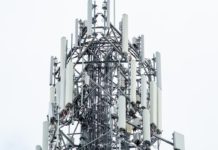In the last months of 2019 there were quite a few municipalities that “said NO to the experimentation of 5G”.
We reiterate that we share the perplexity about the rush to a hyper-connected world where even everyday objects must be accessible via the internet.
What worries us instead is the misleading use of scientific data.
The debate on the possible danger associated with chronic exposure to magnetic field levels much lower than that for which the biophysical effects are known initially arose in relation to the 50 Hz magnetic field generated by power lines.
The 50 Hz magnetic field (60 in North America) has been classified as a “possibly carcinogenic” by IARC since the early 2000s and this classification has not been discussed again.
The same research center that today pushes to “evaluate the risks of 5G” has also studied the fields at 50 Hz, with the same method of exposing a large number of animals.
The published results have had much less media coverage, which is a shame because they are very interesting.
A first point to highlight [1] is that the global project plans to test both the effects of electromagnetic fields alone and their combination with other known carcinogens such as formaldehyde [2] or ionizing radiation [3].
Although the result does not appear to have reached the public, exposure of the same type of rats above (1000 µT) the ICNIRP reference levels for the 50 Hz magnetic field [1] did not show any carcinogenic effects.
Male rats exposed to low frequency magnetic field & formaldehyde, showed a statistically significant excess of thyroid C-cell carcinomas and hemolymphoreticular neoplasms [2].
Even more interesting for medical physicists is that, always and only male rats, have shown a statistically significant incidence of malignant Shwannomas of the heart when exposed to the same 50 Hz field levels as the work cited as [2] & 0.1 Gy of ionizing radiation [3].
We wait with some interest for the result, announced for the end of this year [1] of exposure to radiofrequency fields (1.8 GHz) & ionizing radiation.
This exposure is defined as “low and acute”, meaning that the 100 mGy was administered in a single fraction at 6 weeks of age.
All of the above is very interesting but also questionable in many ways, in the sense that there are several observations that can be made.
We have, for example, that the same type of tumor, malignant Shwannoma, occurs only in male rats, exposed to completely different physical agents such as ionizing radiation and radio frequency fields, without a linear dose-response relationship for radio frequencies.
The ICNIRP conclusion that there is no reason to change the exposure limits seems to us to be entirely reasonable.
Physicists are accustomed to considering stochastic risks, and synergistic effects should never be underestimated; think of the well-known case of radon exposure of smokers, but also of other possible synergies that may have been overlooked up to now.
The scientific method requires the precise publication of results so that others can discuss and refute them, if necessary.
The transfer of research results to law makers requires passage by the institutions precisely for the protection of all.
Today it seems possible to read specialist articles on the internet without fully understanding them and to have resolutions approved by the Istituto Superiore di Sanità that say the opposite.
This, in our opinion, is dangerous.






